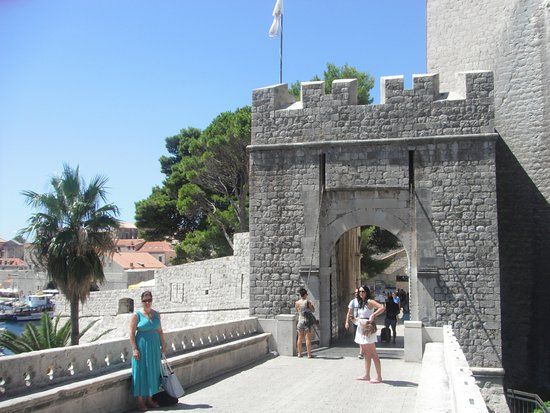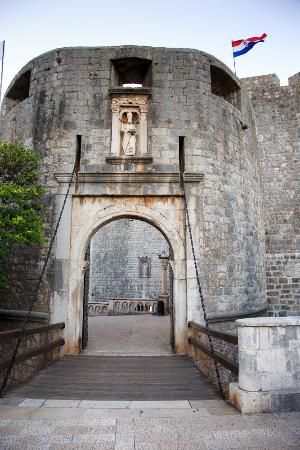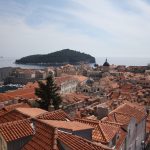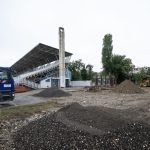Numerous tourists visiting Dubrovnik these days have the opportunity to enter the Old Town using two gates: the Pile Gate and the Ploče Gate, but there used to be two additional gates during Republic of Dubrovnik, the Peskarija Gate and the Ponta Gate.
One more gate known as Buža Gate was opened in the northern part of the walls when the Austrians arrived in Dubrovnik in 1908: During the Austrian occupation, the gate was opened in order to allow the Austrian army officers an access to the tennis courts that had been made in the City wall trench.
The main entrance to the Old Town is located just next to the last bus station in Town, Pile, on the western side of the walls. The gate consists of Inner and Outer City gates that are both always open for local and international people, but the drawbridge used to close each night during the Republic of Dubrovnik to keep local people safe from the invaders. The enemies of the Dubrovnik Republic were former Italian city-states such as Venice, Genoa and Ancona which fought for supremacy in the Adriatic and Mediterranean Sea, as well as the Ottoman Empire which conquered territories of present-day Bosnia and Herzegovina. The semi-circular fortress built in the 16th century forms the Outer City gates with a Renaissance arch which is connected to the stone bridge with a wooden drawbridge.
The bridge with three arches was designed by Croatian local builder Paskoje Miličević and it replaced the older bridge when the council decided to widen the city trench.
The inner City gates are decorated with a gothic arch and double doorway which were built according to the prototype of the Peskarija Gate.
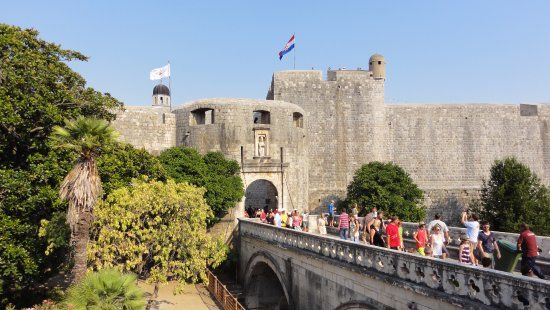
On the eastern side of the walls, the Ploče Gate is surmounted by an Asimon fortress. The word Asimon derives from the Latin expression “Arx iter Moenia” which translates as ”the fortress between the walls”. These Gates were once called The Gate(s) of St. Luka according to the nearby church. The Gates were built in Romanesque style where a Romanesque head of Dubrovnik’s patron saint, St. Blaise, was carved into the main arch stone. The interior door of Ploče Gate is surmounted by a strong Asimon (again from the Latin “Arx inter Moenia” – the fortress between the walls), and the nearby Revelin fortress which is built into the outer section of the Gate in order to allow easier surveillance over the port of Dubrovnik.
The Outer Ploče Gate was built in the 15th century according to the plans by Simeone della Cava, and according to the prototype of the former Pile bridge which was built in the 14th century by Ivan of Siena.
